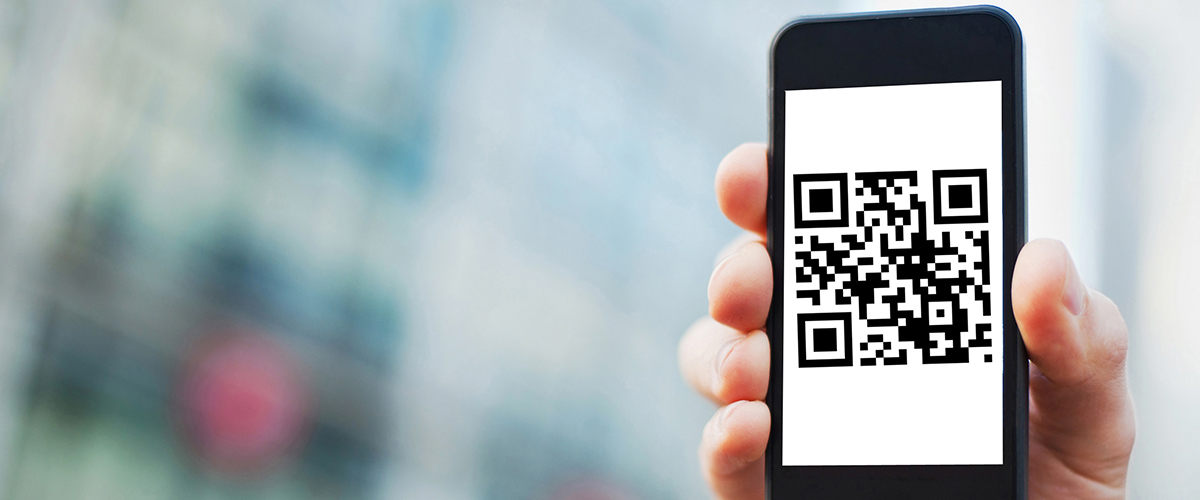A proposed change from the California Bureau of Cannabis Control would require marijuana dispensaries and delivery vehicles to post Quick Response Codes for easy scan by smartphones.
In a move to deter individuals from unknowingly purchasing cannabis products from unlicensed businesses, the California Cannabis Bureau has proposed an emergency cannabis regulation to require Quick Response (QR) Codes to prove legitamacy.
“The proposed regulations will help consumers avoid purchasing cannabis goods from unlicensed businesses by providing a simple way to confirm licensure immediately before entering the premises or receiving a delivery,” Bureau Chief Lori Ajax said in a news release. “These requirements will also assist law enforcement in distinguishing between legal and illegal transportation of cannabis goods.”
Today, the BCC provided notice of proposed emergency #cannabis regulations that would make it mandatory for cannabis #businesses to post their unique QR Code in storefront windows and carry it with them while transporting or #delivering cannabis. 🌿🏬🚚https://t.co/RmRtkuaFNI pic.twitter.com/ETpfcDApZ8
— BCC Info (@BCCinfo_dca) January 24, 2020
Smartphone users would be able to scan the QR Codes and quickly confirm if a dispensary or delivery service is legit.
The QR codes are part of an effort to increase consumer participation in the legal cannabis market and to address public health concerns. Illicit cannabis shops do not have to meet the California standards for testing products such as vape cartridge ingredients.
The Cannabis Bureau seized more than 10,000 illegal vape pens from unlicensed cannabis retailers in Los Angeles during a three-day raid in Dec. 2019. The proposed emergency regulations would help support the legal cannabis market where products such as vape cartridges are routinely tested to protect public health and safety.
The Cannabis Bureau’s proposed emergency regulation comes after a recent campaign launched to voluntarily post the QR codes in storefronts of cannabis dispensaries. The Cannabis Bureau started the “Get #weedwise” public awareness campaign last year.
In case you missed it, we’ve officially launched our QR code campaign to help California #consumers easily identify licensed #cannabis retailers by using their smartphones! 🌿📱
Read all about it here: https://t.co/JnXsgn1i7K pic.twitter.com/u3LRzHmn3Z
— BCC Info (@BCCinfo_dca) December 19, 2019
The proposed emergency regulation is intended to “provide an additional and highly visible way for consumers to immediately identify licensed businesses that sell cannabis goods meeting the state’s rigorous safety and testing requirements.”
According to the news release, the Bureau will file the emergency regulations with the Office of Administrative Law (OAL). A five-calendar day formal public comment period begins the same day the OAL publishes the proposed regulations as being “under review” on its website.
California’s Illegal Cannabis Market
When California launched legal recreational sales in 2018, it became the largest cannabis market in the world. Lawmakers attempted to efficiently regulate it, but heavy taxes and slow licensing created more incentive for those participating in the long-standing illegal market to stay put.
According to a recent Arcview and BDS Analytics report, in 2019 California’s cannabis black market was estimated at $8.7 billion. The report suggests that California consumers spend about $3 in California’s illegal marijuana market for every $1 in the legal one.
The state’s illicit market is projected to “make up 53% of all sales in 2024; compared with the majority of other states with more supportive regulatory regimes whose illicit markets are expected to shrink to 30% or less of total sales in that time frame,” the report’s authors wrote.
In response to the spotty rollout process, California Governor Gavin Newsom (D) plans to streamline cannabis licensing and centralize the structure of the cannabis program. Newsom outlined the plan in his proposed budget for the 2020-2021 year.
Learn more about the state’s current laws on our California marijuana laws education page.
More on Cannabis
Want more cannabis news? Check out our cannabis news feed for the latest reports on cannabis policy, business, and scientific research.
EDITOR UPDATE 2/5/20: California’s Bureau of Cannabis Control announced on Feb. 3, 2020, that it has submitted proposed regulations to make it mandatory for cannabis businesses to post unique QR codes in storefront windows to the Office of Administrative Law (OAL).






